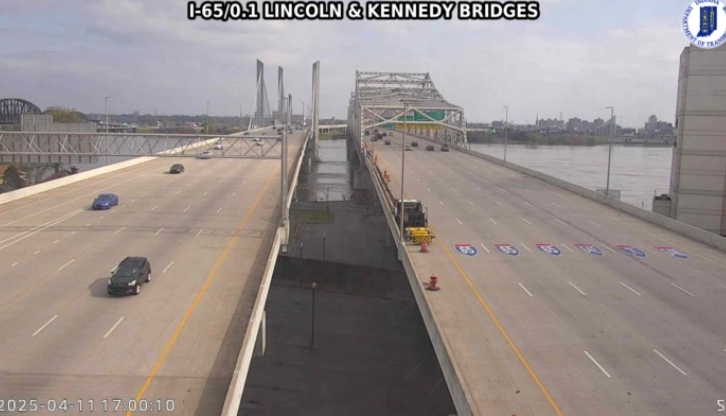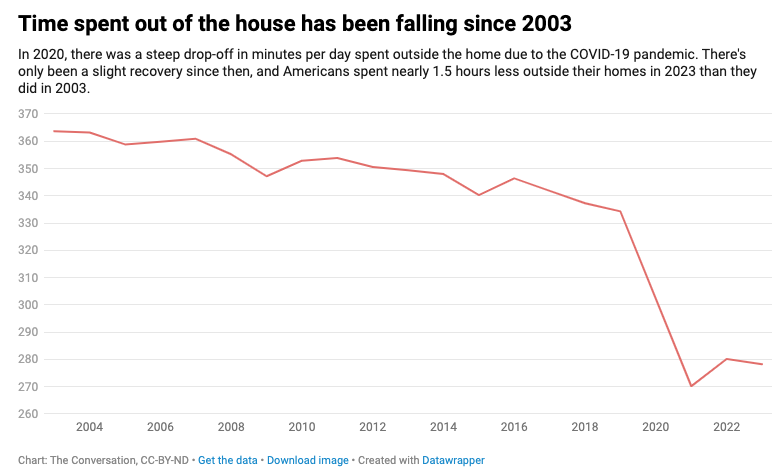What City Observatory Did This Week
Congestion pricing can work anywhere, even where there isn’t much transit. While New York City garners headlines for its congestion pricing triumph, Louisville, Kentucky demonstrates that pricing works brilliantly in smaller metros too. After implementing a modest $2.61 toll on I-65 bridges crossing the Ohio River, traffic volumes plummeted by half, with total river crossings down 15%.

The results debunk persistent transportation myths: you don’t need comprehensive transit alternatives for pricing to succeed, and traffic doesn’t mindlessly pile up when costs are applied – it “evaporates.” Residents in suburban Clark County across from downtown Louisville now drive 18% fewer miles daily.
This middle-American success story proves congestion pricing works anywhere. Even a small toll eliminates traffic jams while improving efficiency, contradicting the false narrative that only ultra-dense cities with robust transit can benefit from road pricing solutions.
Must Read
Allston freeway widening challenged. Plans to widen I-90, the Massachusetts Turnpike just west of Boston are still stuck. The Commonwealth lacks the funds for the engineers preferred massive overhaul. And opponents of rebuilding a wide roadway have pointed out that there are fundamental errors in the traffic projections being used by MassDOT to justify and eight lane road. The project’s traffic consultants claim that the roadway “needs” to accomodate as many as 7,300 vehicles in the peak hour, but the reality is far fewer vehicles use this stretch of road: that 7,300 vehicle figure is
. . . roughly 20 percent higher than actual observed traffic volumes from the present day. StreetsblogMASS downloaded the actual eastbound traffic data from that gantry for the first quarter of 2025, . . . It shows that hourly traffic volumes on Interstate 90 rarely exceed 6000 cars per hour in either direction.
So, in reality, the MassDOT is actually proposing to expand the highway. The net effect of that will be to funnel more traffic into the area, and on to local streets, actually exacerbating congestion and pollution. As Streetsblog says: They’re simply designing a bigger bottleneck.
In addition, as Streetsblog points out, TetraTech, the firm offering up the traffic proejctions has a strong incentive to exaggerate traffic. They’ve already made about $4.6 million in fees for the planning work, and stand to make even more if the project is designed to be larger and require more extensive analysis of environmental impacts. Just as in Oregon, consulting firms have strong incentives to supersize projects.
Urban lifestyles promote health. The World Economic Forum has a fascinating synopsis of the connection between urban lifestyles and fighting non-communicable diseases. A growing fraction of our health expenses are driven by non-communicable diseases–cardiovascular disease, cancer, chronic respiratory disease and diabetes–and it turns out that the built enviornment plays a key role in enabling and incentivizing active living. Research also shows that urban environments that promote social interaction also support mental health, in part by fighting the isolation and disconnection that are a growing problem in many societies. Building places where we routinely walk and cycle promotes health:
Creating and retrofitting places that promote movement and physical activity on a large scale is essential. Urban areas with extensive cycling and walking infrastructure encourage people to seamlessly integrate movement into their daily routines.
Too much of our investment in “health care” is in treating, rather than preventing these diseases that are linked to sedentary lifestyles. Building better urban environments, and more housing in neighborhoods that are walkable and bikeable will pay health benefits.
New Knowledge
Don’t get around much any more. There’s been a long term decline in the amount of time Americans spend outside the home. That trend accelerated during the pandemic, and it now appears that time away from home has permanently shifted downward by almost 20 percent. This means we’re traveling less, and has important social and economic effects.
. . . a world where people stay home more and travel less challenges the assumption, which guided transportation policy and planning throughout the 20th century, that we must plan and build for endlessly rising private vehicle travel. . . . This suggests that transportation policy might focus less on expensive and invasive investments to accommodate waxing peak period travel demand—such as wider urban highways and expanded commuter rail transit lines—and more on other priorities such as increasing pedestrian and cyclist safety and serving the basic mobility needs of disadvantaged travelers.
Follow City Observatory on Bluesky.

